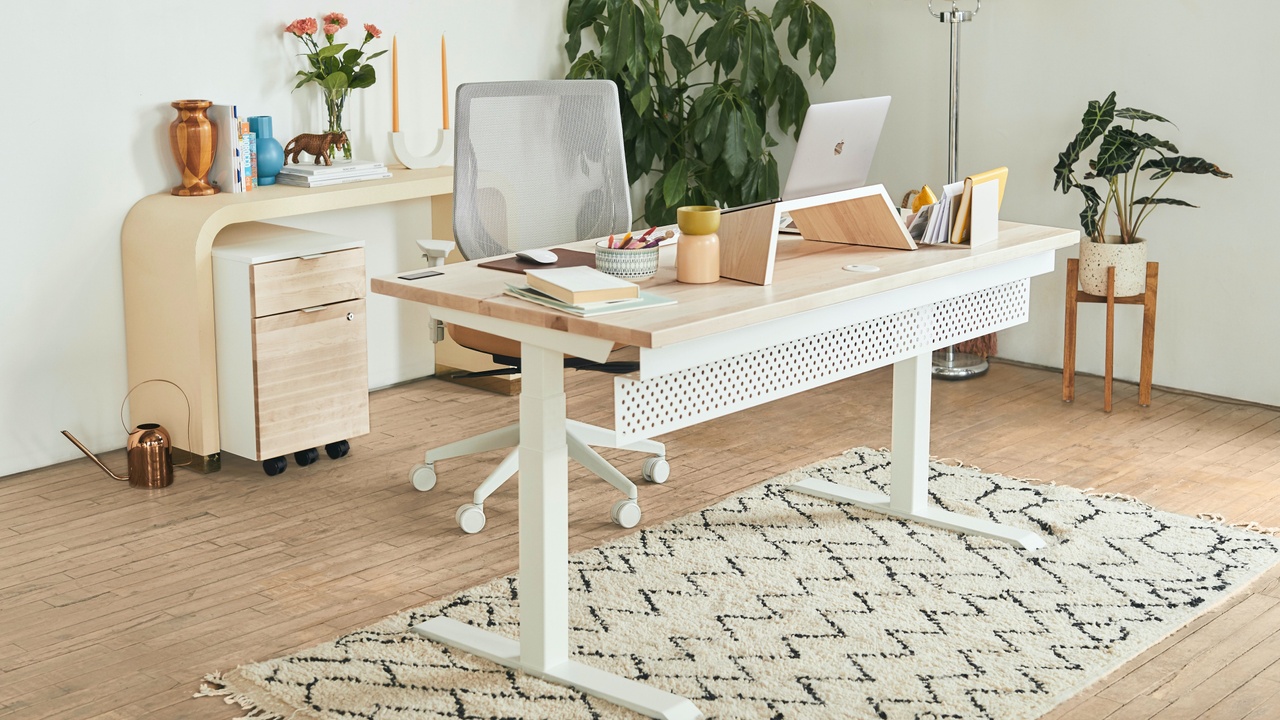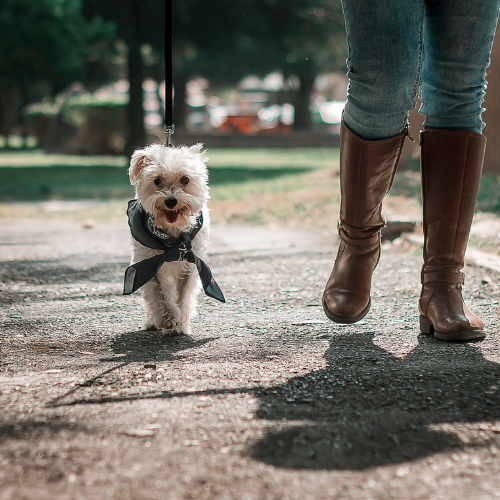
Especially after 2020, you can type "tips for working from home" and find an endless slough of articles, advice, and resources that will help you maximize your productivity and feel better in your workspace.
One person's work-from-home tip is another person's work-from-home nightmare.
It's important to remember that we all have our own organizational styles, optimal work environments, and different lifestyles that impact the way we work each day.
The key is finding what works for YOU.
Where to Begin When Designing Your Work From Home Setup
If you have the luxury of working from home, you know that while it can be a huge perk and give you ample flexibility, it can also come with some added challenges and distractions!
When thinking about your own work-from-home setup, you want to eliminate as many of these as possible so that working from home is as amazing as it has the potential to be.
To start, look around your home.
Is your home on the whole messy and disorganized? If yes, start your organization process there.
Is your home neat and tidy but your calendar is a disaster? If you raised your hand on that one, your work is going to begin in your mind and by eliminating some of the appointments and mental clutter in your schedule.
Or, maybe both your home and calendar are as spruced up as can be but your business is a hot mess? If that’s you, begin there.
The more you focus on your overall environment, the more successful your working from home experience will be. The clutter in your home can affect your work, as can your mental clutter and a business that doesn't have the right systems and procedures.
Your organizational priorities ideally should be: Home, Mind, Business.
When you address each of these in this order, you'll have more success being productive, peaceful, and prosperous.
How to Minimize Distractions
When you head into a physical office outside of your home, you don't have to worry about piles of laundry staring back at you, dirty dishes in the sink screaming to be washed, and your child's toy room looking like a tornado came through. However, when you work from home, your attention is constantly being pulled in other directions. I've heard clients tell me they can all but HEAR their toilets calling out to them to be scrubbed while they try to stay focused on writing this report that's due by noon.
And no matter how much you hate scrubbing toilets, it still tends to have a stronger lure than whatever it is you’re trying to focus on for work.
One way I recommend to help thwart this need to procrastinate on developing your marketing plan and vacuuming every room in the house instead is to set up a household schedule for cleaning.
The truth is, chores and mess can be pretty non-stop and when the whole family is home, everything builds up much faster than usual. Having a routine makes this easier on you and leaves the decision-making out of it.
It's even better if the routine in place allows you to tackle these tasks before or after your workday or on the weekends.
The other way to minimize distractions is to communicate with other members in the home when you need focus time, quiet time, and what the noise level needs to be in order for you to be productive. Communication is essential to you not getting frustrated when your daughter runs the blender during your sales calls.

I often recommend setting aside, if possible, a designated work area. Working at the dining room table can lead to more distractions and sometimes designating a workspace is the ticket to being able to separate from the day-to-day household stuff and focus on work instead.
We can't minimize all of the distractions from our kids and families, but we can definitely eliminate some by setting boundaries and creating systems that work for us.
What Does An Organized Office REALLY Look Like?
Let's talk about the home office itself! Recently, I was doing a live video and had my husband's messy bookshelf in the background. He’s organized, but sometimes he tends towards clutter, and the books were definitely an indication of this. Someone commented on how his desk was a mess and my gentle response was that for him, it's not messy and he is able to find everything he needs, exactly when he needs it.
We often see before and after photos that show a desk going from piles of paper and folders to being completely empty and stark. In fact, I used to share these photos as "evidence" of my client's success. But before and after pictures don't always tell the full story. For some people, those piles of paper ARE organized and an empty desk means they are missing a whole lot of bills, important deadlines, and spend half their day looking for stuff.
This is one of the reasons I rarely use a virtual background when on Zoom. I always like to be authentic and genuine and demonstrate to my clients exactly what my actual situation is. The Zoom backgrounds may look pretty, but for me, it's about function before beauty.
It's about letting go of perfectionism and instead finding what works for you. Now, for some people, they do need it to look good before they start working. A perfect office might increase their creativity, or spur more productivity. That's ok too! Still for others, having it look a certain way might be the only goal.
The only way to answer this question, is to turn it back on yourself and ask, "What does an organized office look like for YOU?"
Is it having a clear desk?
No books?
Lots of books?
Having everything that you're working on laid out?
Messy doesn't mean disorganized and neat doesn't automatically mean organized.
Simplifying Your Workspace
Remove things from your workspace that don't belong. This is anything that doesn't serve a purpose in your work. Letting go is a huge part of the process of setting yourself up with a productive space to work in.
Two of the biggest offenders I see in this area are:
- Office supplies: Some people only require a laptop and they're off to the races! Others need a lot of paper either for work or to process or stay on track. What supplies do you need? Do you have too many pens? Not enough pens? Is your stapler broken or out of staples? Spending your time running around trying to find a working pen can throw you off throughout the day and cause you to lose productivity. Get rid of excess stuff in your space and make sure you have all the supplies you need to get the job done.
- Tech: We tend to hold onto old technology, sometimes even when it's broken. Streamlining your tech means getting rid of old phones, broken pieces of equipment, old cords, and chargers. If it's frayed and not working, get rid of it. I recommend making a pile of all your tech and going through it to make sure it's working, necessary to keep, and has a purpose. If you're unsure of some things, put them in a box and store them so you can access them if you do happen to find that one piece of tech you need the charger for. If you don't use it, eliminate it.
You will find that by starting with just these two things, your office will be cleaner, less cluttered, and you will increase your focus on what's most important.
Keeping in a Rhythm and Routine that Works for YOU
During the Covid 19 pandemic, the big joke was that people wore nice shirts and tops and pajamas on the bottom as they could only be seen from the waist down on Zoom and video calls.
I'll be the first to raise my hand and say I'm a huge fan of yoga pants and athleisure wear, but I don't wear the same clothes to work that I sleep in. For me, it creates a boundary in my mind and helps me to be more focused and productive during work hours, and gives me more freedom to truly shut off and relax when not working.
My simple morning routine consists of waking up, getting in some daily movement, having breakfast and coffee, changing into my work attire (whatever it may be, but not my PJ’s), and then sitting down at my desk.

As much as possible, I try to stay in this rhythm on a daily basis.
It's all about creating what works for you. Take some time to map out your ideal day when you're working AND your ideal day off.
What time are you starting each day? What time do you need to set your alarm in the morning to ensure your morning routine is done, you're dressed, and off on the right foot?
Even if every day doesn't look the same, how can you stick to what works for you?
When we work from home, it can feel like time is more loose and free-form, and a huge piece of staying on track and productive comes from choosing how you will spend your time and putting a plan in place to do so.
Now I want to hear from you! What tips and tricks have you learned that have helped you maximize your work-from-home situation? Where do you still struggle or need help?
Send me an email at [email protected] and let me know your thoughts!
Stay connected with news and updates!
Join my mailing list to receive the latest news and updates.
Don't worry, your information will not be shared.
We hate SPAM. We will never sell your information, for any reason.

